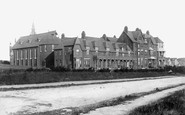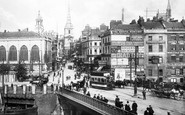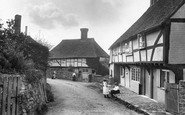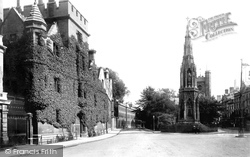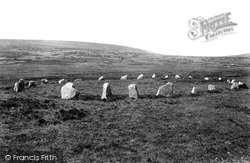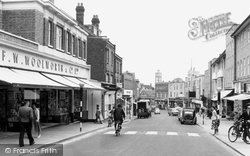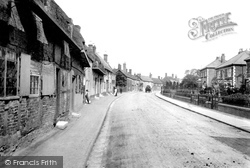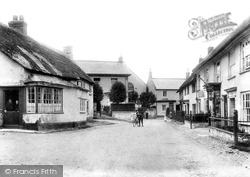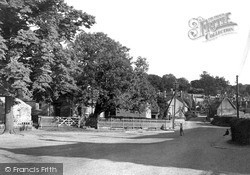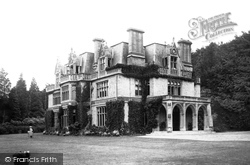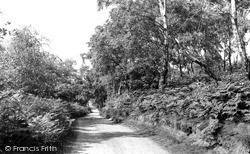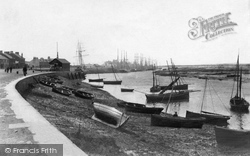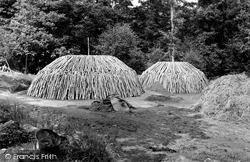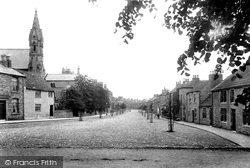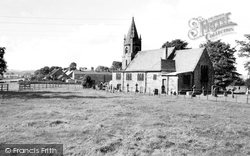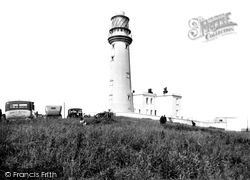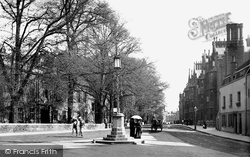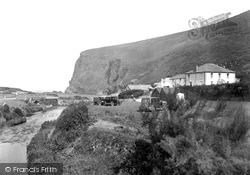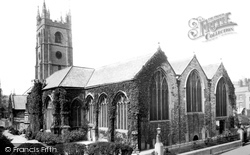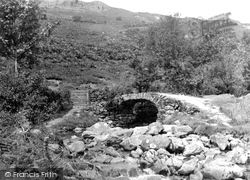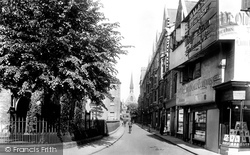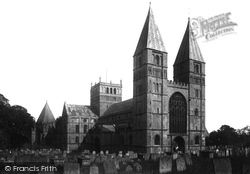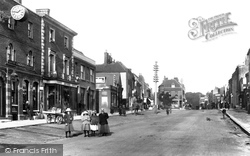Places
Sorry, no places were found that related to your search.
Photos
Sorry, no photos were found that related to your search.
Maps
39 maps found.
Books
Sorry, no books were found that related to your search.
Memories
781 memories found. Showing results 21 to 30.
Childhood Memories
I moved to Spencer Avenue, Hayes, when I was 5 and the war had just finished. My earliest recollections were of starting school at Yeading Lane and walking there through thick snow. Luckily we had school dinners so ...Read more
A memory of Hayes in 1947 by
Fun Times
I was born in Lower Aire Street in 1944, my brother was born in 1942. I left when I was 8 years old but can still remember the street. We lived next door to Mr and Mrs Wiley on one side and Mrs Hargreaves on the other ...Read more
A memory of Windhill in 1944 by
My Second Home
Right from a small child i have grown up loving Wells-next-the-Sea, my dad used to take us on holidays there and we stayed in a little cottage which was a short walk to the quay where my brother and I would wander down to ...Read more
A memory of Wells-Next-The-Sea in 1969
Broadstairs And St Mary's Home 1957
I was 6 years old and had had bronchitis and asthma and so I was sent away from smoggy London to St Mary's Home in Broadstairs. I was taken with other young children on a train by a nurse in a brown uniform. ...Read more
A memory of Broadstairs in 1957 by
Evacuation
I was 6 years old in 1941 and a native of Glasgow. During the worst of the German bombing at that time, my mother, brother and I moved to Auchnahyle Farm, which was farmed by my father's uncle and aunts, Bob, Mag and Jess Jamieson. My ...Read more
A memory of Pitlochry in 1941 by
Cheadle In The Second World War
I think that we must have moved to Cheadle around 1938, because I was born in Newcastle under Lyme, but my younger sister was born in Cheadle in 1939. At that time we lived on Leek Road. We had various ...Read more
A memory of Cheadle in 1930 by
Bombing Raids In 1940
Bristol's premier shopping centre was turned into a wasteland of burned out buildings after major bombing raids in 1940, during the Second World War. Bridge Street Summary Bridge Street ran from High Street, rising up a ...Read more
A memory of Bristol by
Betton A Rural Idyl
I literally stumbled upon this website and have been interested to read the memories of people who lived in Betton, a place well known to me. I lived there as a wartime evacuee in the 1940s, and Marc Chrysanthou's ...Read more
A memory of Market Drayton in 1940 by
The Old Bakery
The building in the distance is the old bakery. When I was a child/teenager (in the 1960s) my grandparents (Bert and Annie Hurd) lived in a cottage just behind where this picture was taken, and whenever we visited them we would go ...Read more
A memory of Byworth by
The Londesborough
My memories of the Londesborough in the mid to late sixties was that it was one of the city's music pubs. Around 1966 local bands (called groups then) played at the Londesborough, The Coach and Horses and the Burns. The ...Read more
A memory of York in 1966 by
Captions
291 captions found. Showing results 49 to 72.
To the right of Balliol College is the famous Martyrs' Memorial, commemorating the 16th-century Protestant martyrs Latimer, Ridley and Cranmer, who were burned at the stake in nearby Broad Street.
It is probable, given the number of stone circles found on Dartmoor, that a family or a group of families erected them for ritual worship, either to venerate the dead or for an astronomical purpose.
Another well-known multi-national dominates this view; the branch has been here since about 1930, though the left-hand extension is a post-War development on the site of the Cinema de Luxe, which burned
The notorious Judge Jeffries condemned her to be burned at the stake, but this sentence was commuted to beheading. She is buried in the nearby churchyard at Ellingham.
The men standing at the door on the left are customers of the Lion Inn, which burned down on 8 November 1908 and was never rebuilt. The Congregational Chapel in the background was built in 1831.
This is not Isaac Newton's Woolsthorpe, but the village west of Grantham in rolling countryside right on the Leicestershire border; it has fine views of Belvoir Castle a mile away on its hill on the other
Tennyson knew and loved Haslemere and the Surrey hills. Aldworth, his former home, is in Lurgashall, Sussex, but close to Haslemere, along the now renamed Tennyson Lane.
In 1698 the traveller Celia Fiennes noted that there was a considerable industry of cutting and burning the bracken on Cannock Chase.
A royal burgh and port, Irvine was, by the 1920s, a town of 7,000 inhabitants.
Epping Forest, which now covers some 6,000 acres, was ten times larger in the 17th century.
Perhaps Richmond's most handsome and unchanged cobbled street, Newbiggin means 'new settlement'; its level width suggests that it was planned as the town's original market place.
The small village of Burnt Yates in Nidderdale is graced by this neat little Victorian sandstone church.
Tennyson knew and loved Haslemere and the Surrey Hills. Aldworth, his former home, is in Lurgashall, Sussex, but close to Haslemere, along the now renamed Tennyson Lane.
The lighthouse was designed by Samuel Watts and built by John Matson at a cost of £8000. It was first lit on 1 December 1806.
At the junction of Common Road and Slough Road, two College schoolboys, one carrying a cricket bat over his right shoulder, are seen walking past the 'Burning Bush'.
Specimens of 'Little Trees', a species of deep water coral so named because of its shape, are sometimes washed up on the beach at Crackington.
St Andrew's is the mother church of Plymouth; there is evidence that a Christian community used the site as early as the 8th century. Construction of the present building commenced in 1370.
High Sweden Bridge is a picturesque packhorse bridge over the Scandale Beck between High Pike and Snarker Pike (there is a Low Sweden Bridge lower down the valley).
High Sweden Bridge is a picturesque packhorse bridge over the Scandale Beck between High Pike and Snarker Pike (there is a Low Sweden Bridge lower down the valley).
Exeter College was founded by one of Exeter's bishops in 1314, though most of the college buildings have been restored or rebuilt over the years.
This superb minster church was founded before 956; the present church was started in 1108 by the Archbishop of York, and the west towers were completed by about 1150.
This bustling view of Church Road with its bicycles and horse-drawn vehicles is dominated by the sadly- lamented old Town Hall, which burned down in 1966.
High Sweden Bridge is a picturesque packhorse bridge over the Scandale Beck between High Pike and Snarker Pike (there is a Low Sweden Bridge lower down the valley).
The Constitutional Club (far left) burned down in February 1910. The blaze also damaged Archer's ironmongers' shop next door (with a kettle for its trade-sign).
Places (0)
Photos (0)
Memories (781)
Books (0)
Maps (39)

